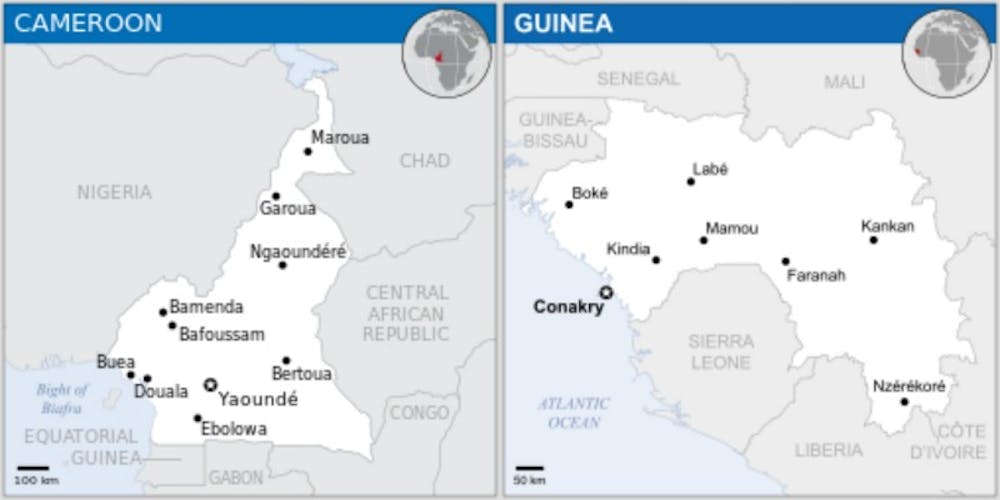On Friday, Yap Boum II, PhD, gave a talk about his experience with Ebola vaccine trials as part of the Center for Global Health’s Infectious Disease and Biodefense series.
Boum, who has degrees in biology, microbiology and quality management, works for Epicentre, the research arm of Médecins San Frontières, also known as Doctors without Borders. He helped coordinate clinic trials of an Ebola vaccine.
“The vaccine we were involved in took place in Guinea — at a time there were still some cases — because we needed cases to have the antibodies for a vaccine,” Boum said.
Boum added that while the clinical efficacy of the vaccine has been shown, more steps will need to be completed before it can be approved by regulatory agencies like the FDA, and others around the world.
“Currently, we are winding up vaccine trials that we were involved in in Guinea, and then we will have finished the follow-up also, because we are following some people up to six months,” Boum said.
Boum was introduced by Asst. Prof of Infectious Diseases Christopher Moore, with whom he has worked with for several years.
“I’ve been working with Mbarara University since 2007, on various different studies with colleagues there, and trainees, and so, since at the time, Yap was the director at the center in Mbarara, I collaborated with him on laboratory based studies in these clinical studies — the laboratory aspect of his clinical studies,” Moore said.
According to both Moore and Boum, the initial spread of the Ebola virus was due to a number of factors playing off of each other.
First, Ebola has appeared periodically before, but never in Guinea, Sierra Leone and surrounding parts of West Africa. It’s likely there was no immunity to the disease anywhere in the area.
Second, this was the first time Ebola had appeared outside of rural areas. The virus was able to spread rapidly amongst the densely packed and highly mobile urban population.
Third, there was a lack of basic infrastructure in place to deal with the disease. There was no system to keep infected people from leaving quarantines, or encourage them to come in the first place. Potentially infected people were even able to travel across borders.
A lack of infrastructure also slowed the development of treatments, cures and vaccines. This, combined with a lack of education on the Ebola centers, made people reluctant to bring loved ones to them.
“So at some point, someone can ask, ‘Why are you asking me to bring my relatives to a place where they won’t be treated?’” Boum said. “…People want to be with their relatives up to the end and go to the burial.”
According to Boum, there are three main take-aways for the international community.
One, resources and educational materials need to be put in place so people have the ability to mobilize quickly and learn how to deal with future pandemics.
Two, the systems in places that have already dealt with pandemics need to be strengthened.
Three, without these two things, future epidemics will become globalized.
“I think we need, together, to work harder on building capacity in resource-limited countries, because as you’ve seen in Ebola, it wasn’t a disease for Africa,” Boum said. “By the time it starts being treated, it’s going to the U.S., it’s going to Europe. So, if in Africa, we are not able to handle that, it will come to Europe and to the U.S.”







